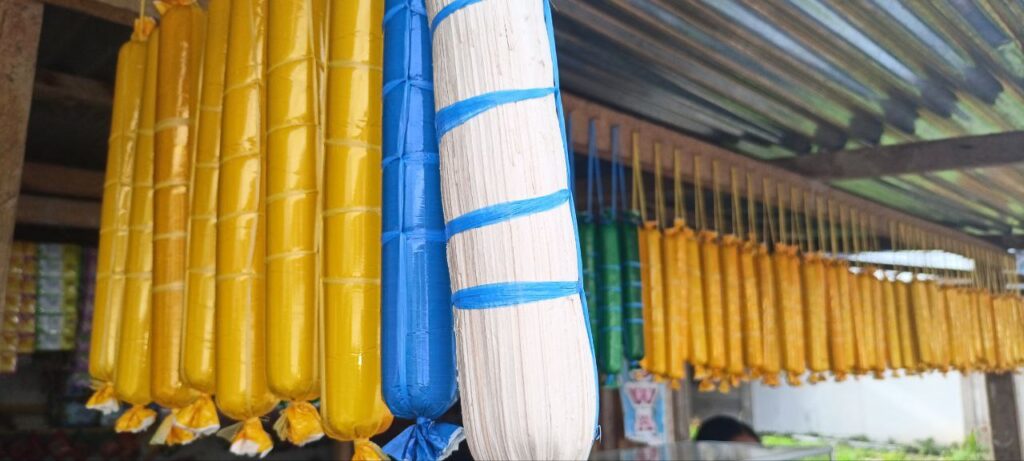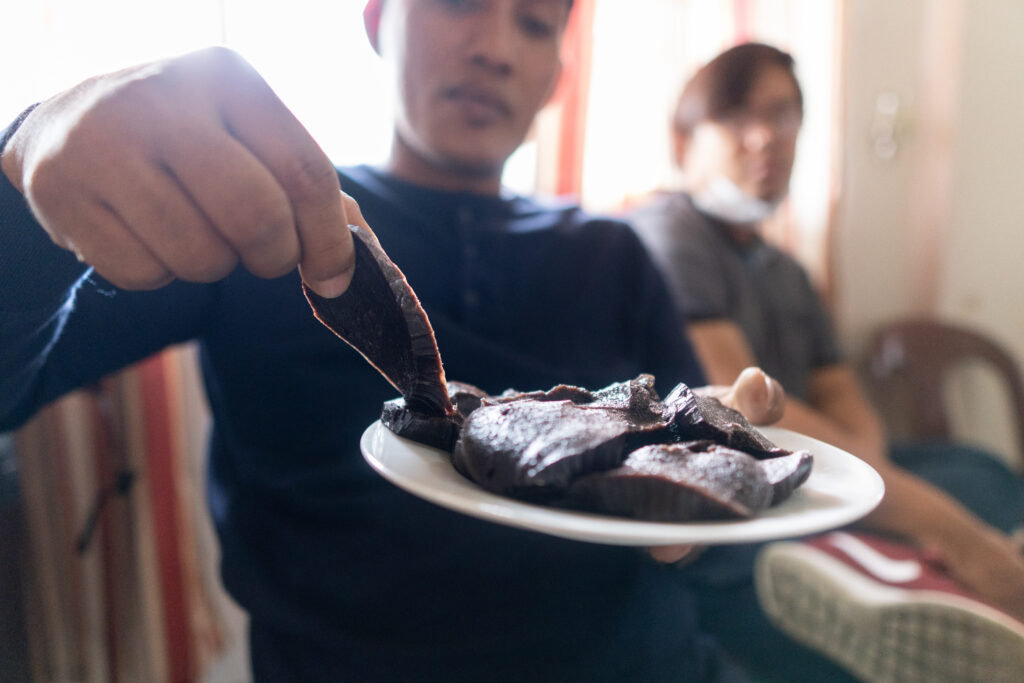Story by Robert de la Serna
While traveling from Masiu to Butig, you’ll come across colorful log-shaped items that dangle like wind chimes, inviting travelers with a friendly call: ‘Don’t just look, buy me!’ These vibrant treats, known as ‘dodol,’ are a common sight in Lanao del Sur. In Masiu, where the roads are narrow, both sides of the path, lined with pastry stalls, seem to convey the same welcoming message – an opportunity to savor in these delectable indulgences.

Dodol is a traditional Maranao sweet delicacy, with a rich history that extends beyond the boundaries of Lanao del Sur. Originating in Southeast Asia, dodol (also sometimes spelled, dudol) can also be found in Indonesia and Malaysia, reflecting the shared appreciation for this treat among Moslem cultures. Its creation is as intricate as its taste. To make dodol, artisans blend glutinous rice flour, sugar, and coconut milk. This mixture is carefully simmered, requiring constant stirring to achieve the perfect consistency. The result is a unique texture that strikes a balance between firmness and stickiness.
What distinguishes the Maranao dodol, apart from its flavor, is its presentation. The finished dodol is wrapped in softened abaca bark sheath, infusing it with a subtle earthy aroma. Then, it’s beautifully encased in colorful cellophane, reminiscent of the vibrancy of Maranao colors, making it a visual and culinary experience. Dodol is more than a sweet treat; it’s a testament to the richness of Maranao culture and food heritage.
As you carefully unwrap the log to take a bite, you’re reminded of its close relative in Bohol, known as “kalamay.” These two sweets share common Filipino roots but have distinct characteristics. Kalamay is traditionally enclosed within a coconut shell, giving it a rustic appeal. In contrast, dodol embraces the use of eye-catching wrappers, showcasing the marketing ingenuity of Lanao del Sur.
Texture-wise, kalamay is silky and smooth, thanks to the richness of coconut milk. In contrast, dodol derives its firmness from rice flour, offering a chewy and slightly sticky texture, making it an excellent option for those who seek a dessert that’s less sugary and more satisfying to the palate.
While Butig may not rival the bustling dodol market in Masiu, it has its own gem of a dodol maker.

Butig is the proud home of the renowned dodol artisan, Faridah Makalandong Sarip. Her dodol creation truly shines by achieving what, to me, appears to be a perfect harmony between the traditional Lanao dodol and the kalamay of Bohol. With its semi-sticky texture and mild sweetness, her dodol is an excellent choice for those who savor a more nuanced and balanced flavor in their treats, offering a truly satisfying compromise.
To all those exploring Butig, here’s an invitation to relish the authentic Maranao flavors of dodol and, if the opportunity arises, seek out the renowned Paridah Makalandong Sarip’s version. Your taste buds and cultural curiosity will undoubtedly be in for a delightful experience.